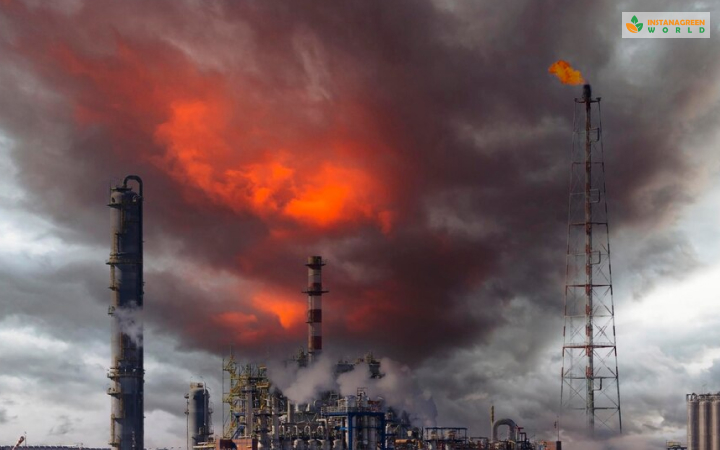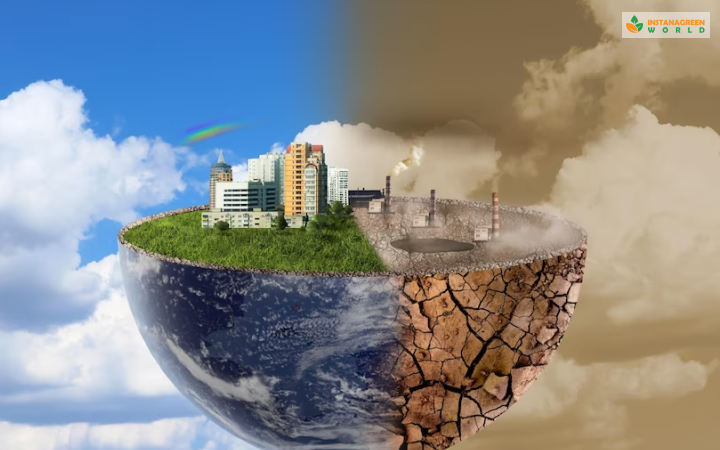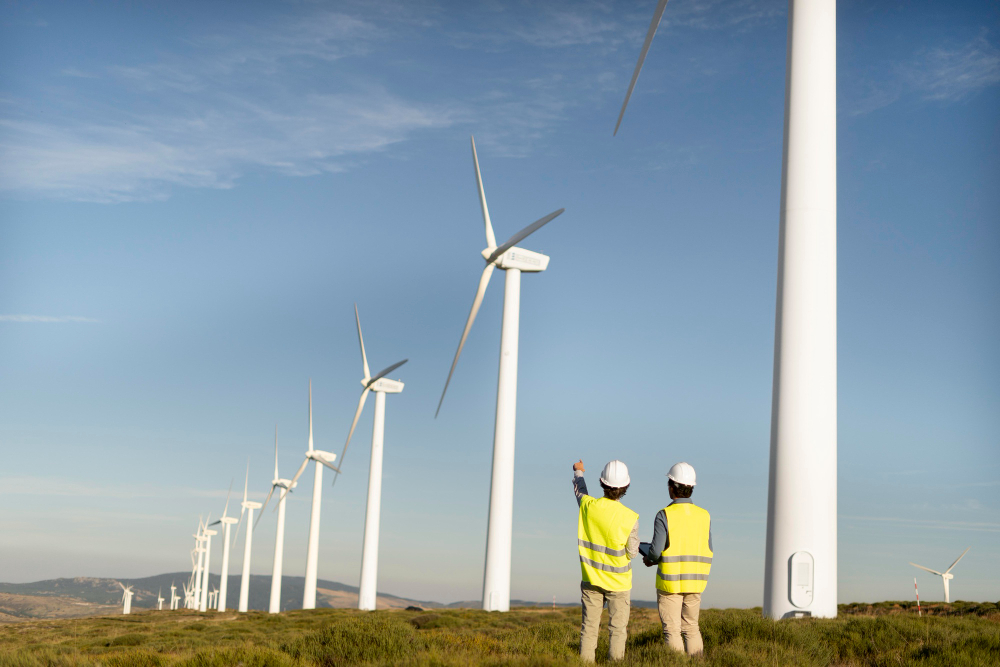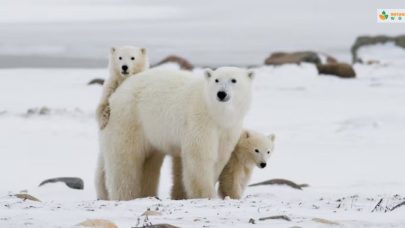Greenhouse gases are gases in Earth’s atmosphere that trap heat. They allow sunlight to enter the atmosphere freely prevent some of the heat that the Earth reflects back in space from escaping.
This trapped heat keeps our planet’s climate warm enough to support life. These greenhouse gases contribute to the greenhouse effect, which is the warming of the Earth’s surface and lower atmosphere.
Human activities, the burning of fossil fuels and deforestation, have increased the concentrations of these gases in the atmosphere, enhancing the natural greenhouse effect and leading to global warming and climate change. Efforts to mitigate climate change often focus on reducing emissions of these greenhouse gases.
What Are Greenhouse Gases? What Do They Do?

Greenhouse gases are substances in the Earth’s atmosphere that trap heat. They allow sunlight to enter the atmosphere freely and prevent some of the heat that the Earth reflects back in space from escaping.
This trapped heat warms the planet, creating what is commonly referred to as the greenhouse effect.
The primary greenhouse gases in Earth’s atmosphere include carbon dioxide (CO2), methane (CH4), nitrous oxide (N2O), water vapor, and various synthetic gases like chlorofluorocarbons (CFCs).
The Major Long-Lived Greenhouse Gases
The major long-lived greenhouse gases, which have a significant impact on the Earth’s climate over extended periods, include:
Carbon Dioxide (CO2)
Carbon dioxide is the most prevalent and well-known greenhouse gas. It releases natural processes like respiration and volcanic activity, human activities like burning fossil fuels (coal, oil, and natural gas), deforestation, and industrial processes increase atmospheric CO2 concentrations.
Methane (CH4)
Methane is a potent greenhouse gas, with a much higher heat-trapping capacity carbon dioxide over a shorter time frame.
It is released the production and transport of coal, oil, and natural gas, livestock digestion, decay of organic waste in landfills, and certain industrial processes.
Nitrous Oxide (N20)
Nitrous oxide is released from agricultural and industrial activities, at the combustion of fossil fuels and solid waste. It has a higher warming potential for carbon dioxide in persists in the atmosphere for a longer time.
Fluorinated Gases
This category has various synthetic gases that do not have natural sources but are produced through industrial processes.
Examples include hydrofluorocarbons (HFCs), perfluorocarbons (PFCs), sulfur hexafluoride (SF6), and nitrogen trifluoride (NF3).
These gases have high global warming potentials, meaning they can trap a significant amount of heat in the atmosphere.
Major Sources Of Anthropogenic Greenhouse Gases

The major sources of greenhouse gas emissions are diverse and can be categorized into several sectors, each associated with specific human activities.
- Burning Of Fossil Fuels
The burning of fossil fuels is a major contributor to greenhouse gas emissions and plays a significant role in climate change.
Fossil fuels, which include coal, oil, and natural gas. They are rich in carbon and have been formed over millions of years from the remains of ancient plants and organisms.
When these fuels are burned for energy, they release carbon dioxide (CO2) and pollutants into the atmosphere.
- Agriculture, Forestry, And Other Land Use
The Agriculture, Forestry, and Other Land Use (AFOLU) sector is a significant contributor to greenhouse gas emissions and plays a crucial role in climate change.
This sector has a range of activities related to land use, like agriculture, deforestation, afforestation, reforestation, and land management practices.
- Cement Manufacture
Cement manufacturing is source of greenhouse gas emissions, primarily the chemical processes involved in converting limestone (calcium carbonate) into clinker (calcium oxide) through the process of calcination.
The cement industry is a major contributor to carbon dioxide (CO2) emissions, and efforts are underway to reduce its environmental impact.
- Aerosols
Aerosols are tiny particles or droplets suspended in the air. They can be natural or anthropogenic (human-made) and vary widely in size, composition, and origin.
Aerosols play important roles in the Earth’s atmosphere and can have climatic and health-related effects.
Global Impact Of Greenhouse Gases

Greenhouse gases (GHGs) have a global impact on the Earth’s climate system, influencing temperature, weather patterns, sea levels, and ecosystems.
The primary greenhouse gases include carbon dioxide (CO2), methane (CH4), nitrous oxide (N2O), water vapor, and synthetic gases like chlorofluorocarbons (CFCs).
Global Warming
The accumulation of greenhouse gases in the atmosphere enhances the natural greenhouse effect, trapping more heat. This leads to an increase in global average temperatures, a phenomenon known as global warming.
Climate Change
Global warming contributes to changes in climate patterns, including shifts in temperature, precipitation, and extreme weather events. This results in more frequent and severe heat waves, storms, floods, and droughts.
Rising Sea Levels
The warming of the Earth’s surface causes thermal expansion of seawater and the melting of glaciers and ice caps. This leads to rising sea levels, which can result in coastal erosion, increased flooding, and threats to low-lying coastal areas.
Ocean Acidification
The absorption of excess CO2 by the world’s oceans leads to ocean acidification. This can have detrimental effects on marine ecosystems, on organisms with calcium carbonate shells or skeletons, like corals and some shellfish.
Impacts on Ecosystems
Changes in temperature and precipitation patterns affect ecosystems, disrupting the natural balance of plant and animal species. Some species may migrate to new habitats, others may face increased risks of extinction.
How Does The EU Plan To Reduce Greenhouse Gases?

The European Union (EU) has set ambitious climate goals and has implemented various policies and initiatives to reduce greenhouse gas emissions.
It’s essential to note that specific details and plans may evolve, and new initiatives may have been introduced.
- Cutting emissions in transport
- Setting rules to save energy and invest in renewables
- Preventing the relocation of greenhouse gas emitting industries outside the EU in a bid to avoid tighter standards
- Boosting the world’s first major carbon market – the European Emissions Trading System
- Setting reduction targets for each EU country
- Boosting forests and other carbon capturing areas
Wrapping Up!
Well, there you go; there are a lot of greenhouse gases that are really very harmful to the environment and the human body. Now if you think that this article was helpful for you, all you need to do is give this article a like and comment down below.
Read more…
What Is Thermal Pollution? Causes, Effects & Solutions














